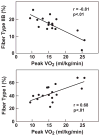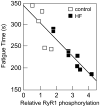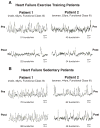Making the case for skeletal myopathy as the major limitation of exercise capacity in heart failure
- PMID: 20647489
- PMCID: PMC3056569
- DOI: 10.1161/CIRCHEARTFAILURE.109.903773
Making the case for skeletal myopathy as the major limitation of exercise capacity in heart failure
Figures









References
-
- Vantura-Clapier R, De Sousa E, Veksler V. Metabolic myopathy in HF. New Physiol Sci. 2002;17:191–196. - PubMed
-
- Duscha B, Schulze PC, Robbins JL, Forman DE. Implications of chronic HF on peripheral vasculature and skeletal muscle before and after exercise training. Heart Fail Rev. 2008;13:21–37. - PubMed
-
- Troosters T, Gosselink R, Decramer M. COPD and chronic HF: Two muscle diseases? J Cardiopul Rehab. 2004;24:137–145. - PubMed
-
- Sinoway LI, Li J. A perspective on the muscle reflex:implications for congestive HF. J Appl Physiol. 2005;99:5–22. - PubMed
-
- Witte KK, Clark AL. Why does chronic HF cause breathlessness and fatigue? Prog Cardiovasc Dis. 2007;49:366–384. - PubMed
Publication types
MeSH terms
Substances
Grants and funding
LinkOut - more resources
Full Text Sources
Medical

